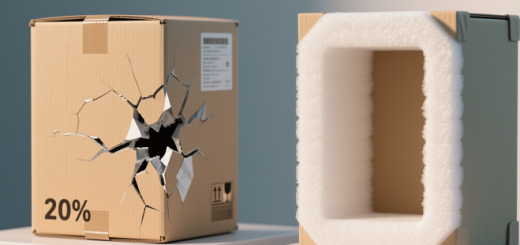Low-Cost Import from China: Maximizing Savings with Consolidated Freight – A Complete Guide for Europe & North America
For businesses and individual shoppers in Europe and North America, sourcing products directly from China offers unparalleled cost advantages—from electronics to furniture. However, fragmented orders, inflated shipping fees, and bureaucratic customs hurdles often turn budget-friendly purchases into financial headaches. Consolidated freight—combining multiple shipments into a single, optimized logistics chain—has emerged as the golden solution for slashing costs, accelerating deliveries, and ensuring compliance. This comprehensive guide reveals actionable strategies to reduce expenses by up to 60%, navigate customs with confidence, and unlock the full potential of cross-border sourcing.
Why Consolidated Freight is a Game-Changer for Importers
1. Cost Reduction: Save 40–60% on Logistics
Individual orders (LCL, or Less-than-Container-Load) incur per-package fees, documentation charges, and underutilized container penalties. Consolidation transforms these inefficiencies:
- Shared Container Costs: Split a 40ft container (€3,800–€5,700) among 10–15 buyers, reducing per-unit costs by 75% . For example, a Berlin-based retailer saved €12,000/year by consolidating 40+ Taobao orders into one shipment.
- Bulk Documentation: Unified commercial invoices and packing lists reduce administrative delays by 20–30% .
2. Speed: From 30 to 14 Days with Direct Routes
Europe’s proximity to China’s coastal hubs enables rapid transit when using consolidated routes:
- China-Europe Rail Freight: Xi’an to Hamburg in 14 days via the China-Europe Railway Express, ideal for high-value goods like medical devices .
- Express Sea Routes: Ningbo to Le Havre in 21 days using optimized container sharing networks .
3. Compliance Confidence: Navigate EU/NA Tariffs Seamlessly
Consolidators handle complex regulations, ensuring:
- Pre-Cleared HS Codes: Unified classification for items like textiles (6109) and electronics (8542) .
- Tariff Optimization: Group similar items to qualify for lower EU tariffs (0–6.5% for most goods) .
Step-by-Step Guide to Consolidated Importing
Step 1: Choose a Consolidation-Friendly Platform
- Alibaba: Ideal for bulk orders (MOQ ≥50 units). Use Trade Assurance for secure payments and pre-shipment inspections .
- Taobao: Best for small batches. Opt for Taobao Consolidated Shipping (air or sea freight) to merge orders from multiple sellers .
- Third-Party Agents: Platforms like TransAgent or QuickFish simplify cross-border purchases, handle translations, and offer consolidated logistics .
Red Flags to Avoid:
- Sellers offering “free shipping” without clear consolidation policies.
- No tracking updates beyond port arrivals.
Step 2: Optimize Cargo for Cross-Border Logistics
- Weight/Volume Balance: Ensure each shipment fills 80–90% of container space. For example, a 20ft container (33m³) can hold 15–20 pallets of 1.5m³ each .
- Standardized Packaging: Use Euro pallets (120×80 cm) and waterproof crates for EU warehouse efficiency .
- Hazardous Material Compliance: Lithium batteries or chemicals require IATA/IMDG-certified consolidators .
Step 3: Master EU/NA Customs Documentation
- HS Codes: Use the EU’s Taric database or the U.S. Census Bureau’s HTS to classify items accurately .
- Certificates: Include CE marks for electronics, REACH declarations for chemicals, and origin certificates (Form E) for preferential tariffs .
- Duty Calculation: Use tools like the EU Customs Union’s online calculator to pre-estimate fees (e.g., 10% VAT on non-EU goods) .
Step 4: Leverage Key Logistics Hubs
- Le Havre (France): Europe’s largest port (25% of national imports). Consolidators offer 15% discounts for pre-booked containers .
- Rotterdam (Netherlands): Gateway to Central Europe. Ideal for time-sensitive goods like fashion .
- Los Angeles (USA): Primary West Coast port. Rail connections to Chicago and Dallas reduce inland transit time by 30% .
Case Study: Canadian Electronics Retailer Cuts Costs by 55%
Challenge: A Toronto-based retailer importing 200+ monthly Taobao orders faced €45k/year in customs fees and 35-day delays.
Solution:
- Rail Consolidation: Xi’an to Toronto via Vancouver (21-day transit) .
- Pre-Cleared Customs: Partnered with DHL Global Forwarding for unified documentation .
- FTZ Storage: Stored excess inventory in Vancouver FTZ to defer VAT .
Results:
- Customs costs slashed by €25k.
- Delivery times stabilized at 14 days.
Cost-Saving Tactics for Key Industries
Fashion & Apparel
- Seasonal Bulk Orders: Consolidate 500+ garment shipments into rail containers (€1.50/kg) .
- Pre-Cleared Customs: Use consolidators like Flexport for expedited EU clearance .
Electronics & Tech
- PCB Board Consolidation: Group orders from Shenzhen factories into FCL containers .
- Battery Compliance: Use IATA-certified consolidators for lithium-ion shipments .
Industrial Machinery
- Rail Freight: Xi’an to Strasbourg in 18 days (vs. 30 days by sea) .
- Duty Refunds: Claim VAT refunds for consolidated shipments under EU rules .
Common Pitfalls & Solutions
| Problem | Solution |
|---|---|
| “Double payment” customs fees | Consolidators prepay duties and invoice clients post-delivery . |
| Damaged goods in transit | Demand waterproof packaging and video evidence of loaded containers . |
| Delays at EU borders | Use FTZs for temporary storage and expedited clearance . |
The Future of Consolidated Shipping
- AI-Powered Optimization: Tools like Flexport’s AI predict container fill rates and route disruptions in real time .
- Carbon-Neutral Routes: Maersk’s biofuel-powered ships reduce emissions by 1M tons/year—critical for the EU’s 2050 carbon neutrality goals .
- Blockchain Tracking: Walmart-style digital ledgers ensure transparency from Shenzhen factories to Paris showrooms .
Conclusion
Effortless cross-border importing from China isn’t a fantasy—it’s a reality for businesses that leverage consolidation. By partnering with regional consolidators, optimizing logistics, and mastering compliance, you can slash costs, accelerate deliveries, and future-proof your supply chain.

